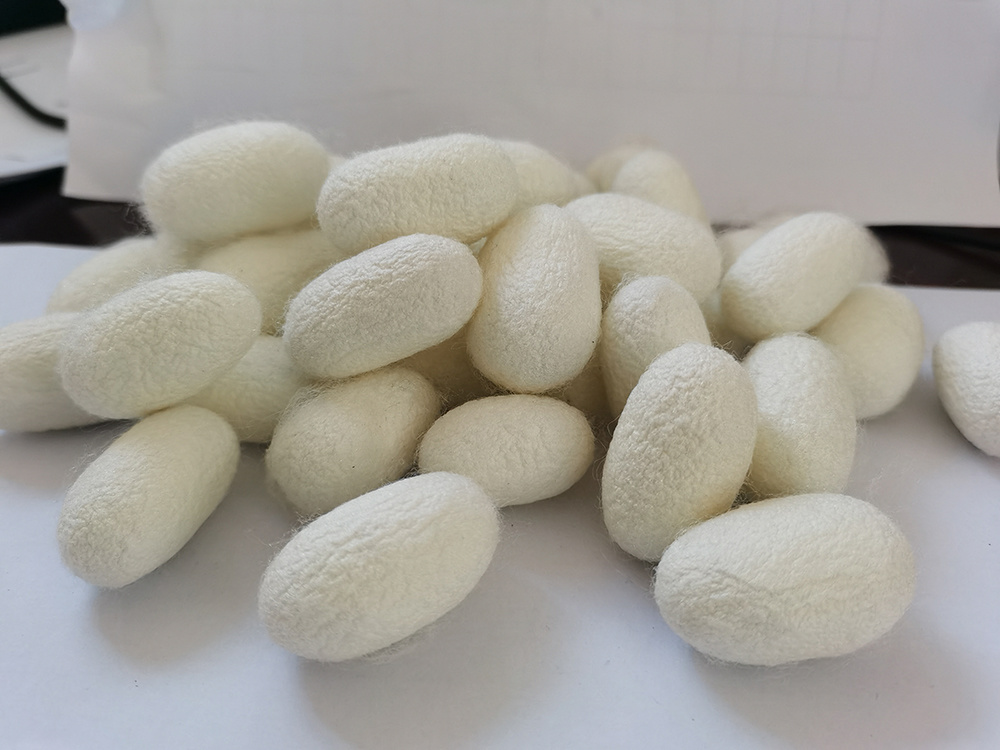Cocoon
In the process of silk production, cocoons need to go through many steps, including cocoon mixing, cocoon stripping, cocoon selection, cocoon cooking and silk reeling. These steps are to improve the quality and yield of raw silk and ensure the quality of the final product.
Key words:
Dehong Zhengxin
Mulberry planting
Green Silk
The Silk Road
Classification:
Product Description
The silkworm cocoon refers to the cocoon of the mulberry silkworm, which is a cystic protective layer of the silkworm pupa stage and contains the pupa body. The following is a detailed introduction about silkworm cocoons:
1. basic information
Name: cocoon, also known as silkworm coat, cocoon yellow, cocoon shell.
Name: silkworm cocoon.
Source: The oval shell formed by silkworm spinning is the raw material for silk reeling.
2. morphological characteristics
The silkworm cocoons are long oval, oval waist, spherical or spindle-shaped and other different shapes, or slightly constricted in the middle.
Color diversity, white, yellow, light green, red and other colors.
Moderate size, about 3~4cm long, 1.7~2.1cm in diameter.
The surface is white with irregular wrinkles and attached silk, which is tomentose. The inner wall of the silk is very regular, light and tough, not easy to tear.
3. structure composition
Silkworm cocoons are mainly composed of fibrous protein silk fibroin, which is coated with another protein sericin. In raw silk, silk fibroin accounts for about 70%, sericin accounts for about 22%.
An unfeathered cocoon with a yellow-brown silkworm chrysalis and a light brown, shrunken silkworm skin that was peeled off before pupation.
4. uses
Silk reeling: The cocoon layer can be reeled and is the main raw material for silk.
Other uses: Cocoon clothing and silk reeling waste can be used as silk cotton and silk spinning raw materials.
In the field of medicine: cocoons have the effects of stopping bleeding, clearing heat and quenching thirst, and can be used to treat various bleeding diseases and oral ulcers.
Feed: silkworm pupa and silkworm skin can be used as livestock feed.
5. production process
In the process of silk production, cocoons need to go through many steps, including cocoon mixing, cocoon stripping, cocoon selection, cocoon cooking and silk reeling. These steps are to improve the quality and yield of raw silk and ensure the quality of the final product.
6. cultural significance
Cocoon has a profound meaning in Chinese culture. It is not only an important raw material for silk production, but also a symbol of diligence, wisdom and beauty. Since ancient times, silk has been one of China's important export commodities, bringing great economic and cultural value to China.
To sum up, silkworm cocoon is a natural product with many uses and profound cultural significance. In modern society, with the continuous progress of science and technology and people's attention to environmental protection and health, the application field of silkworm cocoon will be more extensive and in-depth.
Get free product quotes
Welcome to leave your information to get in touch with us!







